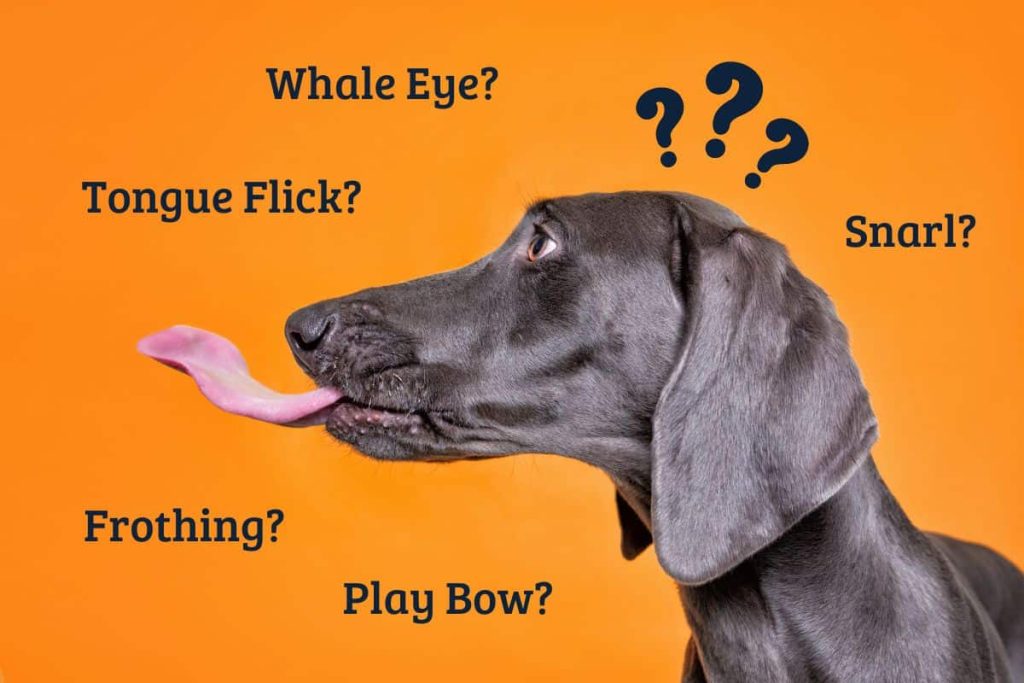Using Body Language in Training: How to Communicate Effectively with Your Pet

The Unspoken Language of Pets
In the world of pet ownership, the importance of body language cannot be overstated. Pets, much like humans, possess an intricate system of non-verbal cues that convey their thoughts and feelings. Understanding and interpreting these signals can transform the way you interact and train your animals, fostering a more meaningful bond.
Effective communication with your pet goes beyond mere verbal commands or treats. It involves:
- Recognizing cues: Dogs often express their feelings through tail wagging. For example, a wagging tail held high and moving rapidly typically indicates happiness and excitement. Conversely, a low, stiff tail could suggest anxiety or aggression. Cats, on the other hand, may signal affection or relaxation through a slow blink, known as a “cat kiss.” When they offer you this gesture, they are trustingly exposing their vulnerable eyes to you.
- Responding appropriately: Just as you expect your pet to follow commands, your responses to their body language are equally important. If a dog approaches you with a low posture and tucked tail, it may be feeling scared. Reassuring it with a calming presence and gentle words can help foster a sense of security, while ignoring these cues could escalate their fear.
- Enhancing training methods: A successful training session hinges on your pet’s comfort level. If you notice signs of stress, such as yawning or lip licking, it may be time to pause and give them space. Recognizing when to push for further learning and when to take a step back makes training much more effective and enjoyable for your pet.
Moreover, diving deeper into this fascinating realm of non-verbal communication can greatly enhance the quality of life for both you and your furry friend. For instance, a dog’s body carriage—whether it is relaxed or stiff—can instantly inform you of its emotional state. Similarly, if a cat curls up beside you, it is not just seeking warmth; it is indicating that it feels safe and trusts your presence.
By exploring these nuances of animal behavior, one not only becomes a better trainer but also a more empathetic companion. Understanding the unspoken language of pets opens a pathway to a more cohesive relationship. To truly connect with your pet and elevate your interactions, begin observing their body language during various activities and reactions. This journey into the unspoken signals of your beloved animal can lead to a deeper understanding and appreciation of their needs and emotions.
DISCOVER MORE: Click here for insights on managing behavioral issues in adopted dogs

Decoding Your Pet’s Signals
As pet owners, developing an awareness of our furry companions’ body language is essential for effective training and bonding. Animals communicate a wealth of information through their posture, movements, and facial expressions. Learning to decode these signals can make a significant difference in training outcomes and the overall relationship with your pet. Here are some key aspects to consider when interpreting your animal’s body language:
- The Importance of Eye Contact: In the animal kingdom, eye contact can convey trust and confidence or, in some cases, aggression. A pet that looks at you with soft eyes and a relaxed body posture is often comfortable and willing to engage with you. However, a fixed stare with dilated pupils may indicate a threat, either from you or an external factor. As the saying goes, “the eyes are the windows to the soul,” and this holds true for our pets.
- Understanding Tail Position: The position and movement of a pet’s tail can reveal much about its emotional state. Dogs, for instance, communicate excitement by wagging their tails, but the height and speed of the wag can vary. A high, fast wag typically signifies joy, while a low wag might indicate submission or uncertainty. Cats also communicate through tail language; a high tail can signal happiness and confidence, while a puffed-up tail might suggest fear or aggression.
- Movement and Posture: Watch how your pet moves in various situations. A dog that approaches you with a loose, wiggly gait is likely feeling joyful and secure. In contrast, a pet that scuttles away or crouches close to the ground may be exhibiting fear or a lack of confidence. Posture matters equally for cats; a cat that arches its back and raises its hair is likely frightened or defensive, whereas a cat that stretches and sprawls is typically relaxed and feeling content.
- The Significance of Vocalization: While body language is critical, vocal sounds such as barks, meows, or growls can provide additional context. For instance, a high-pitched bark might indicate excitement or playfulness, while a deep growl could signal discomfort or a warning. It’s important to consider both body language and vocalizations together to accurately interpret your pet’s feelings.
By attentively observing these signs, pet owners can tailor their training methods to meet the emotional needs of their animal companions. Recognizing and responding to their non-verbal cues not only enriches the training process but also reinforces the bond of trust between you and your pet. This understanding can reduce stress during training and encourage a more positive experience, leading to better behavior and communication.
Incorporating the interpretation of body language into your training routine will create a more harmonious and productive environment for both you and your pet. As you grow more attuned to these cues, the level of connection and understanding deepens, paving the way for a fulfilling partnership.
| Fundamental Concept | Practical Application |
|---|---|
| Non-verbal Signals | Using body position, facial expression, and eye contact. |
| Consistency | Maintaining the same cues to prevent confusion. |
| Understanding Body Language | Recognizing your pet’s physical signals for comfort and stress. |
| Trust Building | Using positive body language to develop a bond. |
The use of body language is crucial in communicating effectively with your pet, as animals largely interpret their environment through visual cues. By integrating these practices, trainers can create a harmonious environment facilitating better learning outcomes. Understanding your pet’s non-verbal cues, such as tail wagging, ear positioning, and even eye contact, allows owners to address training needs more effectively. Furthermore, consistency in signals fosters clear communication, thereby minimizing any confusion or anxiety that pets may experience during the training process. Adopting a confident and open body posture not only helps your pet feel safe but also strengthens the trust between you and your furry partner. In effect, this two-way communication ultimately enhances the overall training experience. Emphasizing these strategies will lead to a richer, more fulfilling relationship with your pet, making training less of a chore and more of a bonding experience.
LEARN MORE: Click here to discover the impact of balanced nutrition on your pet’s health
Enhancing Training Through Body Language
Understanding your pet’s body language is only part of the equation; effectively using your own body language during training can enhance communication and foster a stronger bond. Just as your pet is deciphering your signals, how you present yourself will influence their behavior and engagement. Here are some practical tips on how to align your body language with your training objectives:
- Embrace Open Posture: Animals are sensitive to their environment and the body language of their human counterparts. Adopting an open posture—standing tall with relaxed arms rather than crossing them—communicates reassurance and confidence to your pet. A welcoming stance invites interaction and signals to your pet that you are ready for training. This is particularly effective with nervous dogs or cats, as it helps alleviate their anxiety and promotes trust.
- Use Hand Signals: Beyond verbal commands, hand signals can serve as a powerful tool in training sessions. Many pets respond exceedingly well to visual cues. Maintain consistency in your signals, such as raising your hand for “sit” or extending your arm sideways for “stay.” Combining these signals with verbal commands will reinforce learning and make it easier for your pet to connect the dots between actions and desired behaviors.
- Facial Expressions Matter: It’s not just your movements that matter; your facial expressions can also impact your pet’s behavior significantly. A warm smile and relaxed features can convey encouragement, while a frown or tight jaw might create an atmosphere of tension. When you react positively with your expressions during successful behaviors, it encourages your pet to repeat those actions. Conversely, a stern face can discourage them from exploring or engaging.
- The Power of Proximity: How close you stand to your pet during training can affect their comfort zone and receptiveness to commands. Maintain a distance that allows your pet to feel safe and secure while also providing enough proximity to be engaged. For instance, with dogs, being physically lower to their level, like crouching down, can reduce intimidation and make your training feel more like playtime than a chore.
Adopting these practices can lead to more effective communication between you and your four-legged friend. Remember, training sessions are not solely about commands; they’re about building a mutual understanding. The more aligned your body language is with your training goals, the more likely your pet will not only learn but enjoy the process.
Experiment with these strategies during training routines. Observe how your pet responds to alterations in your posture or expressions. Over time, you will cultivate an unspoken language of your own, deepening the connection between you and your pet and transforming training from a mere task into a shared experience of joy and discovery.
DISCOVER MORE: Click here for innovative cat training techniques
Conclusion: The Unspoken Bond in Pet Training
Utilizing body language in training offers a unique opportunity to establish a deeper connection with your pet, transforming the dynamic from simple commands to a meaningful dialogue. By understanding your pet’s signals and modifying your own body cues, you create an environment where effective communication thrives. Training becomes less of a task and more of a cooperative venture, enriching the relationship between you and your furry companion.
As you explore the nuances of your interactions, remember that consistency and practice are essential. Repetition with hand signals, maintaining open posture, and actively using positive facial expressions can turn training sessions into moments of joy and bonding. Observing how your pet reacts to your body language can be eye-opening as well—providing insight into their comfort levels and emotional states. Armed with this knowledge, you can adjust your approach to make learning both fun and rewarding.
As you implement these body language techniques, you will not only enhance training outcomes but also build a strong foundation of trust and mutual understanding. This rapport reflects not just in successful commands but also in a deeper sense of companionship. Seek to continually refine this unspoken language with your pet—it’s a resource that can add immeasurable value to your shared experiences. Ultimately, by harnessing the power of body language, you can elevate your pet training journey into a delightful exploration of connection, understanding, and fun.


